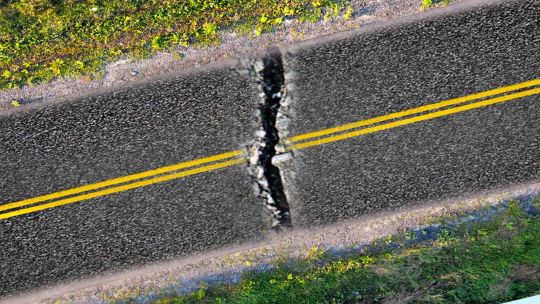
Nothing in the past week was big enough to interrupt this column’s mission of detailed analysis of last month’s midterms. A trade agreement with the United States is potentially momentous but quite apart from nothing being signed with the fine print yet to come (if it ever does since chaos and confusion would seem to be Donald Trump’s modus operandi with all this year’s U-turns in tariff policy) this initiative does not seem especially centred on Argentina – lumped together with Ecuador, El Salvador and Guatemala alongside parallel negotiations with Britain, European Union, Asian Pacific and other countries, Trump would seem to be making a gesture towards freeing trade in response to domestic inflation worries plus his “taxation without representation” facing judicial challenge.
There were far more recent elections on the other side of the Andes but their outcome must await the mid-December run-off, which looks decidedly more tilted than its 2023 counterpart here where Sergio Massa came out of the first round with over 10 more percentage points than the Communist Jeanette Jara and a lead of seven instead of a couple of percent while still suffering double-digit run-off defeat. In general terms, the government continues with the centralisation of power and currency appreciation (one percent monthly devaluation within the bands while inflation continues at around two percent), interpreting last month’s victory as a mandate for both. As for Congress here, it continues in a state of flux since almost everybody loves a winner so the final seat distribution of the future houses will await the new members being sworn in.
So this column will doggedly continue its detailed post-electoral analysis with the entire country except the two Buenos Aires districts and Santiago del Estero still pending. Looking at inland Argentina is far from irrelevant since tax reform is high on the list of President Javier Milei’s priorities with negotiating the revenue sensitivities of provincial governors perhaps the biggest obstacle there.
The clearest expression of inland federalism was Provincias Unidas grouping half a dozen provinces and winning some seven percent of the midterm vote last month with eight deputies. Since their aspiration was also to offer a third way in a polarised election, one litmus test for their success might be to look at how the polarisation in their provinces compared to the general average.
The six provinces are the heavyweights of Córdoba and Santa Fe, the Patagonian oil provinces of Chubut and Santa Cruz, Jujuy (lithium) and Corrientes – their third way thus takes the form of advocating a mixed economy by championing the productive sector while urging public works (it remains to be seen whether their enthusiasm for the productive sector goes as far as cutting its tax burden). In these six provinces the two extremes of the polarisation averaged 58.3 percent as against 72.4 percent nationwide so that their governors did have some impact, but they only actually won in Corrientes (by some 5,000 votes or little over one percent,) while finishing third in Chubut, Santa Cruz and Santa Fe, not winning even one seat in either of the two Patagonian provinces. Of the two heavyweights, Santa Fe Radical Governor Maximiliano Pullaro fared much worse than Córdoba’s Peronist ex-governor Juan Schiaretti despite the latter’s disadvantage of Natalia de la Sota (daughter of another ex-governor) splitting the anti-Kirchnerite Peronist vote – Pullaro picked up just two of nine seats as against Schiaretti’s three which would have been four without De la Sota.
The eruption of Provincias Unidas onto the electoral scene just a couple of months before the midterms was preceded by the existence of at least two federalist caucuses – Encuentro Federal and Innovación Federal, neither of which stands to be anything the same once the new Congress starts to session (or even now amid the current flux). The former is more of a hodge-podge grouping loose ends from various parts of the country with several of its deputies not responding to any provincial governor but Innovación Federal is a more purely provincial creation with its deputies the mouthpieces of the provincial governments of Misiones, Río Negro and Salta in a geographically disperse alliance. In these three provinces the two main forces averaged 53.6 percent of the vote so that they may be considered a stronger federal force, even without any agenda.
Of the 21 provinces remaining to dissect, La Libertad Avanza (LLA) won in 14 and Fuerza Patria in six (Corrientes being the other). Six of these 21 provinces have provincial governments which can be described as Peronist or Kirchnerite (even if some governors in others are Peronists or ex-Peronists like Salta’s Gustavo Sáenz) but there was no total correlation between such regimes and a Fuerza Patria win. The latter did triumph in four of the six – Catamarca, Formosa, La Pampa (narrowly) and Tucumán while losing La Rioja by a whisker and Tierra del Fuego by several percent – while finishing just ahead in San Juan and Santa Cruz where there were hostile provincial governments. Peronist-ruled provinces gave Fuerza Patria an average vote of 45.15 percent, or almost 50 percent ahead of the nationwide performance.
Having looked at the provinces with Provincias Unidas or Innovación Federal governors and those with Peronist administrations and/or Fuerza Patria wins, these total 16 of the 21. The others are Chaco, Entre Ríos, Mendoza, Neuquén and San Luis with LLA chalking up its only absolute majorities in the country in three of them (Entre Ríos, Mendoza and San Luis) while going down to the wire in Chaco against ex-governor Jorge Capitanich and topping the local provincial government in Neuquén by a couple of percent.
Next weekend’s column will wrap up inland voting with some of the loose ends in finer detail. Of the 21 provinces, five (Chubut, Formosa, La Rioja, Río Negro and Tierra del Fuego) are likely to be shortchanged because they were only electing two deputies (although the two Patagonians also three senators) so that their results were virtually known in advance with the winner needing to more than double anybody else in order to avoid the two main contenders winning a seat each, as transpired. The following Saturday will then conclude this series with a profile of the new Congress about to take up its new seats.





